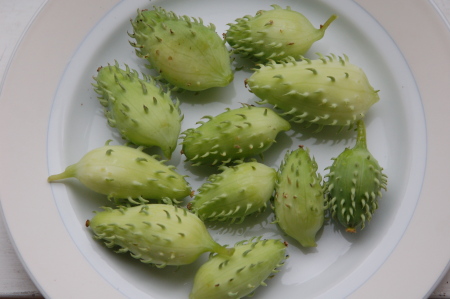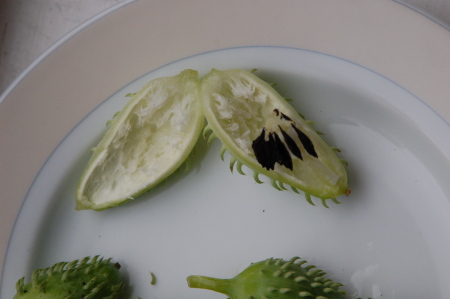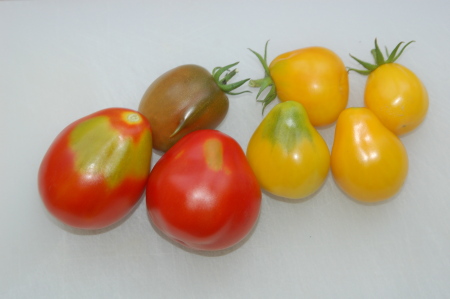
Okay, it’s cucumber time. Emma already posted about her achocha ‘mouse melons’, and even devoted an entire podcast episode to it on Alternative Kitchen Garden last year, as well as a squidoo lens.
[update: I just realized Emma probably posted about something else, ‘Melothria’, a few days ago. Achocha is something she grew and reported on last year]
A look in the Seed Savers Exchange yearbook shows my friend Frank in Belgium as the sole member offering seeds for it. I suspect he’s been growing it for years, and probably one of the people who introduced it to Europe.
I feel behind when it comes to posting on this one.
The insides look like this:

The black things are the seeds, which you take out before eating and save for replanting.
Raw they taste something like a cucumber, and after being fried a bit like green pepper.
Except for the seeds, you can eat the whole thing. I’m looking forward to trying this in different foods. I’m not sure if I like it yet.


